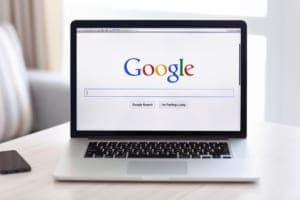Google’s New Link Attributes, How They Help SEO

Google introduced two new link attributes to better identify the nature of specific links that are bound to help with SEO. These two new attributes join the nofollow attribute, which has long been used when linking to a page that you don’t want to imply any type of endorsement, including passing along ranking credit to the page.
The two new attributes are:
- rel=” sponsored”: Use this attribute for links created as part of advertisements, sponsorships, or other compensation agreements.
- rel= “ugc”: Use this attribute for links within user generated content, such as comments, forum posts, and guest blogs. “UGC” stands for User Generated Content.
Not Necessary to Modify Old Nofollow Links
The sponsored and ugc link attributes are already valid, and the nofollow attribute became a “hint” effect on March 1, 2020. However, it’s not necessary to modify your old nofollow links to sponsored or ugc to comply with this new standard, though you will want to update them when editing the page in the future.
The official Google release points out that nofollow links were introduced almost 15 years ago. It evolved into the go-to method for identifying links that were not endorsed, advertising-related, or sponsored. However, Google believes the Internet has changed and they need to adapt, stating, “The web has evolved since nofollow was introduced in 2005… it’s time for nofollow to evolve as well.”
Furthermore, Google does not impose a burden upon companies to go through all their current content and update it with these new link attributes. Google states in the news release:
- “If you use nofollow now as a way to block sponsored links, or to signify that you don’t vouch for a page you link to, that will continue to be supported. There’s absolutely no need to change any nofollow links that you already have.”
- “You can keep using nofollow as a method for flagging such links to avoid possible link scheme penalties. You don’t need to change any existing markup. If you have systems that append this to new links, they can continue to do so. However, we recommend switching over to rel=”sponsored” if or when it is convenient.”
Like Attributes Treated as Hints
“All the link attributes – sponsored, UGC and nofollow – are treated as hints about which links to consider or exclude within Search. We’ll use these hints – along with other signals – as a way to better understand how to appropriately analyze and use links within our systems,” Google announced in the official news release.
By shifting to a hint model, Google allows site owners to indicate that some links shouldn’t be given the weight of a first-party endorsement, while it also uses other information acquired to make an overall assessment regarding the link.
Links contain valuable information and allow Google to improve searches in two main ways.
- First, the information is used by evaluating the description of words within a search, since the link describes the content.
- Secondly, Google plans on using the data to help them deal with unnatural linking patterns.
In the future, Google’s changes may help webmasters rank their pages more effectively. “UGC links will eventually carry some weight … as long as they are from relevant sites, the link is within context and it provides value to the end-user,” Neil Patel believes.
More Than One Link Attribute Can Be Used Per Link
Google also allows multiple link attributes to be used with a single link, stating in the news release:
- “For example, rel=”ugc sponsored” is a perfectly valid attribute that hints that the link came from user-generated content and is sponsored. It’s also valid to use nofollow with the new attributes — such as rel=”nofollow ugc” — if you wish to be backward-compatible with services that don’t support the new attributes.”
Conclusion
The introduction of Google’s new link attributes presents opportunities to marketers.
- Adopting the new link attributes and correctly implementing them can only help your SEO and increase page rankings. It will not hurt.
- Now that there is a clear way of identifying user generated content links, there may be additional opportunities for guest blogging, commenting, and replying to media queries on high-quality websites.
- UGC links may eventually carry some weight since they can be clearly identified apart from nofollow links.
Going forward, guest bloggers will want to ensure that the websites carrying their blogs correctly use rel=”ugc” for their links rather than rel=”nofollow”, so they get as much as possible from their blog posts.
And as a guest blogger, if you can gain permission to update your blog (which can help the host website’s SEO) and get your link changed from nofollow to ugc, it can help you.
Image Building Media
Image Building Media is an internet marketing company based in Tampa, Florida, serving clients in various industries throughout the U.S.
We specialize in internet marketing, including SEO, social media marketing, website design, content marketing, video marketing, email marketing, SMS marketing, mobile web marketing, online reputation management, CRM integration, and more. We also provide consulting services, including conversion analytics.
To learn more about Image Building Media and our services, book a free consultation or contact us direct.
Newsletter: Sign Up
